
Family Tree
Family Tree Magazine is a leading family history magazine published by ABM. Available from all good newsagents. Click here to subscribe.The Stanfield Hall Murders
Nick Thorne finds a Landowner and son killed by disgruntled tenant in the records
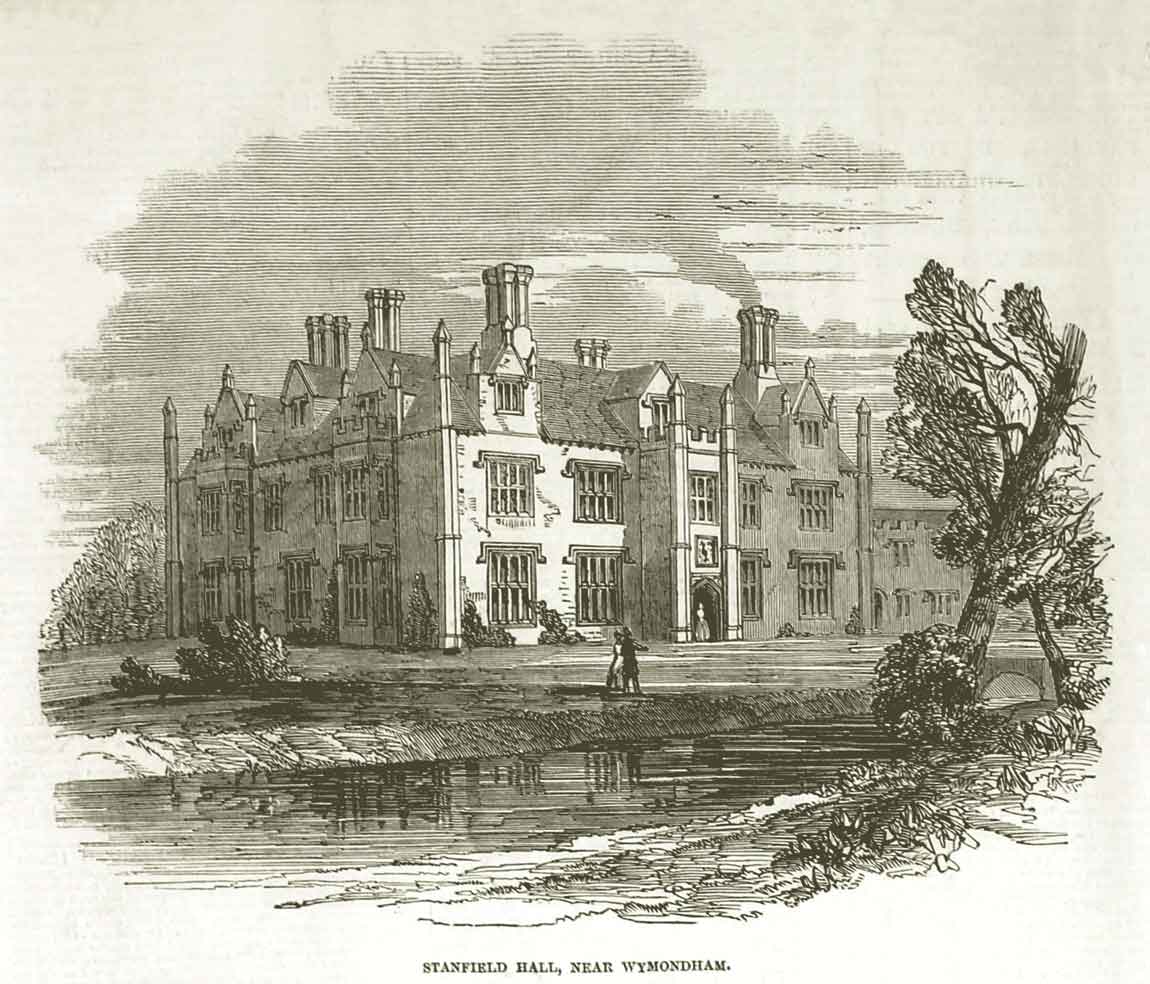
Stanfield Hall, near Wymondham
While I was recently researching within the Norfolk Parish records on TheGenealogist, in the parish of Wymondham, I came across an intriguing entry of the burial on the same day of two men with almost the same Christian and an unusual surname: Isaac Jermy and Isaac Jermy Jermy. Immediately my curiosity was roused wondering what the story was behind this event. My intuition told me that it was likely to be as a result of some sort of tragedy as from their ages, 59 and 27 years, and their place of abode being the same pointed to them being father and son.
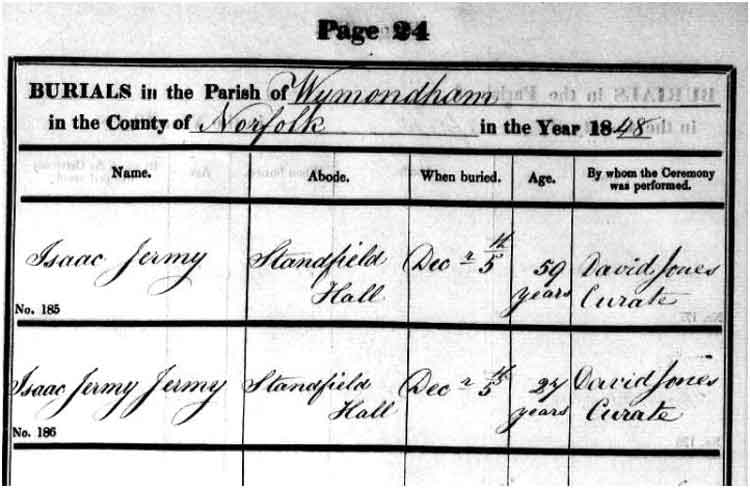
Norfolk Parish Registers on TheGenealogist in partnership with Norfolk Record Office
The clue to unravelling the mystery was to be the place of abode that had been neatly written in the parish register, even if it had been incorrectly spelt as Standfield Hall with a “d”. A search of the Newspapers & Magazines collection on TheGenealogist, for the names of the deceased, revealed a story in The Illustrated London News about the Stanfield Hall Murders in Norfolk.
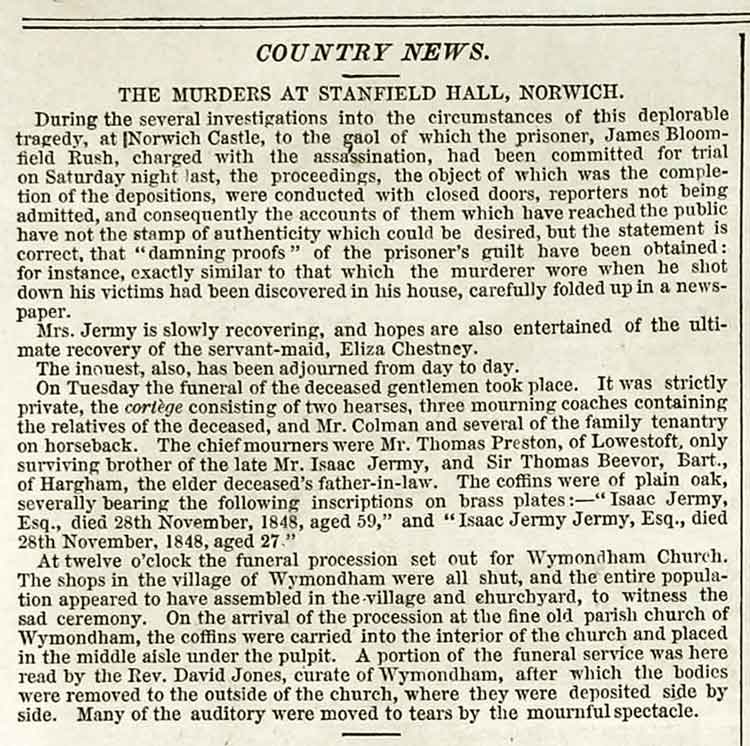
The Illustrated London News December 9th, 1848
The report, while not revealing much about the circumstances of the double murder, introduces a conundrum. Why, I wondered, did the elder Isaac Jermy’s sibling and the deceased not share the same surname? The brother went by the name of Mr Thomas Preston of Lowestoft, so I wondered which of them had changed their name, or whether they were half-brothers? An explanation was forthcoming as soon as I looked the family up in the Peerage, Gentry & Royalty record collection that is also found on TheGenealogist.
An entry in the digitized book Norfolk Families revealed that a William Jermy of Bayfield had married for a second time to a Frances Preston, the daughter of an Isaac Preston of Beeston, but had no children. On William’s death his property passed to his wife’s brother, the Rev George Preston and it was this clergyman’s son who, also named Isaac Preston after his grandfather, was destined to be the eldest victim of the murderer. Isaac, having inherited Stanfield Hall, then assumed the surname of Jermy. The reason for his change of name was to comply with a clause in William Jermy’s original will that the estate should pass “to the male person with the name Jermy nearest related to me in blood, and to his heirs forever”. Isaac Jermy, formally Preston and being a lawyer by profession, was simply complying with the letter of William Jermy’s will. This is not surprising as Isaac had risen to hold the important positions of Steward of Yarmouth and as the Recorder of Norwich, he was a part-time circuit judge.
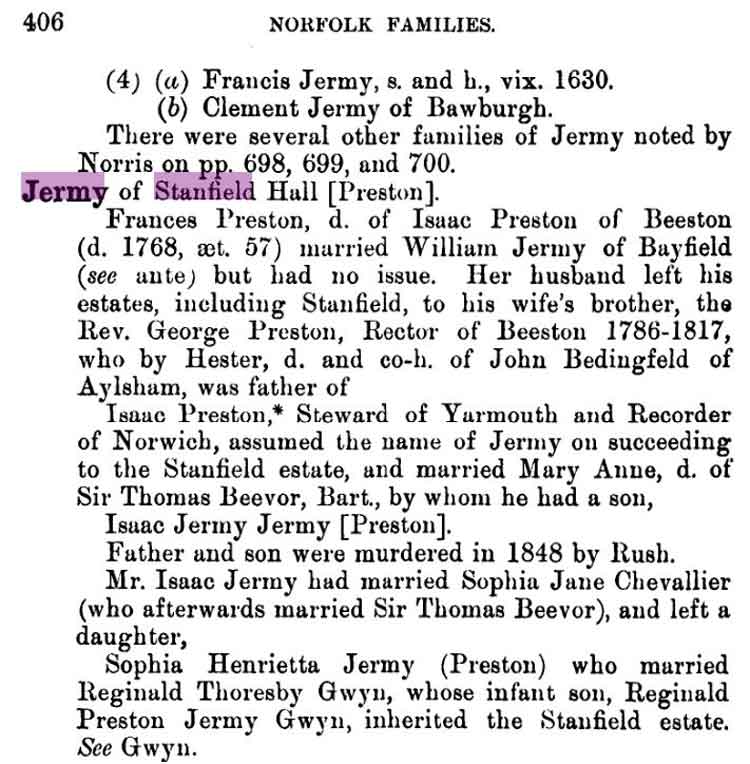
Norfolk Families digitized on TheGenealogist
The short summary, in the Norfolk Families, of how Stanfield Hall came into the Preston/Jermy’s ownership may have been an oversimplification as it is seems that their inheritance had been open to challenge. Evidence of this is also turned up in later newspaper records for 9th March 1850, on TheGenealogist, where a short piece refers to two men called Jermy and Larner gaining entrance to the now empty and tenantless Hall a few years on from the murders and taking possession of it, having previously put forward claims to the estate.

The Illustrated London News March 9th, 1850
The Illustrated London News of the 2nd of December 1848 reveals that the suspect for the murder, James Blomfield Rush, and the Recorder of Norwich had been involved in a law dispute of some sort. Various accounts explain that Rush had borrowed money from his landlord to buy another farm, but was unable to repay the mortgage and was also in debt to his bankers.
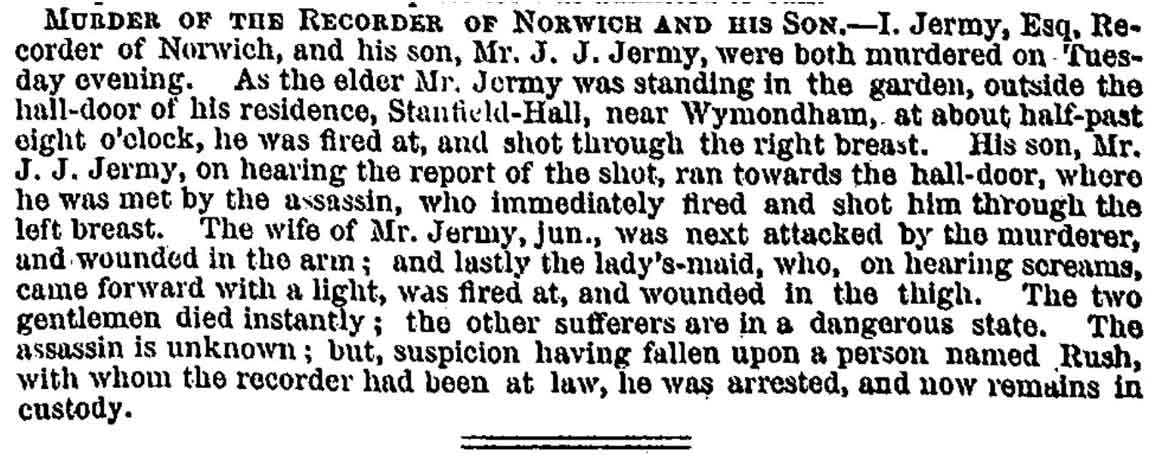
The Illustrated London News of December 2nd, 1848
Aware that the parties were landowners and occupiers at a time when the government was in the process of reforming and replacing the ancient system of payment of tithes in kind with monetary payments between the late 1830s and the 1850s , I next turned to a search of the Tithe schedules and maps on TheGenealogist. I was immediately able to see that the accused was the occupier of land, that was in turn owned by the senior Mr Jermy.
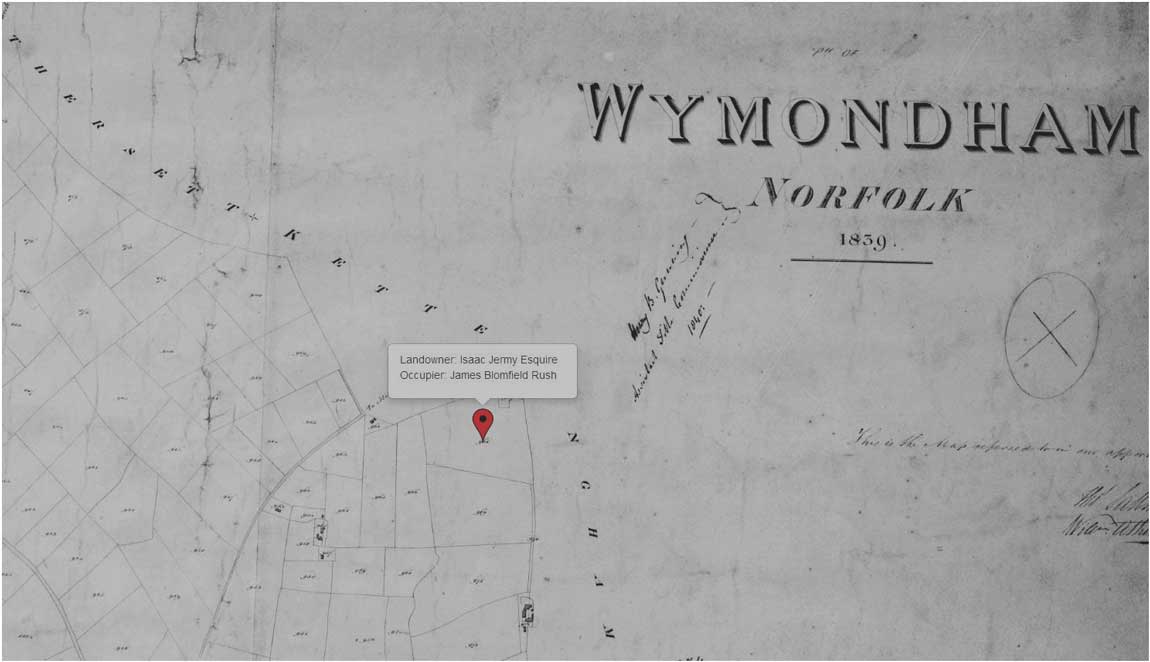
One of the many tithe plots leased to the murderer Rush by his victim Isaac Jermy
James Rush had become the land agent to the family in the Rev Preston’s time, but despite being loaned money by the judge the two had a difficult relationship. When Isaac Jermy took over his inheritance he decided to advertise the sale of the books in the library of the Hall in order to spend the money raised on the refurbishment of the house. This brought to the attention of the men, who claimed that they were the rightful heirs, that the Recorder was breaking a term of the original will of the last named Jermy before it passed to the Preston family. Rush, who was now overstretched by his own farming interests - including owing Mr Jermy the arrears on a mortgage on a farm that he had bought himself when he was meant to be buying it for Jermy - was the prime suspect for the murders and tried to put the blame on the claimants to the estate. Rush had planned to make the unfortunate Jermy and Larner look like they were the murderers. He did this by having forged incriminating documents that were purported to be signed by the man that had the Jermy name. Unfortunately for his plan, this character was unable to read or write and could not have been the murderer. Rush had carried out the shootings of both Isaac Jermy senior and his son while in a disguise, aiming to conceal his involvement in the crime. One of the servants that he wounded, however, recognised his bearing and gave evidence to the court to this effect. In the end the nefarious farmer was convicted by the jury after a very short time deliberating and then sentenced to death. James Blomfield Rush’s public execution was carried out in front of Norwich Castle on the 14th April 1849.
Other records that I discovered, in my research on TheGenealogist, included the last will of the unfortunate late Recorder of Norwich, Isaac Jermy, in the Prerogative Court of Canterbury wills. From reading the document we can see that he had intended that his son, Isaac Jermy Jermy, should have inherited his estate. The Dictionary of National Biography , also found on TheGenealogist website, revealed that Sophia Henrietta Jermy, the daughter of younger Isaac actually inherited Stanfield Hall; when she married Captain Reginald Gwyn the Hall and estate passed into that family. The very same record made mention of various useful references that I could also follow in researching this intriguing story of murder.
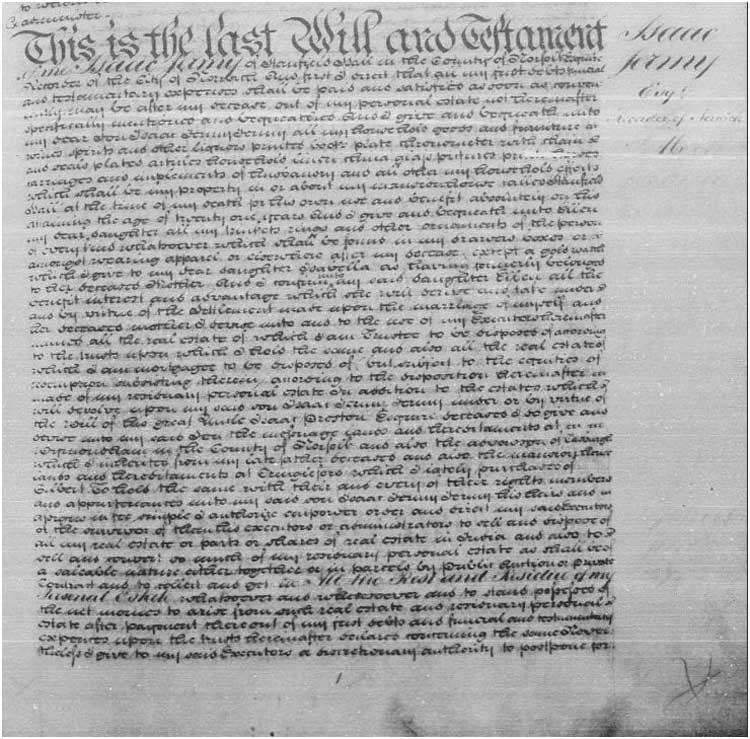
Image of the PCC will of Isaac Jermy on TheGenealogist
TheGenealogist has a whole host of different record collections ranging from parish, to landowner and occupier records, newspaper and magazines, plus the digitized books of nobility and gentry, all of which have helped reveal the story around the murders of Stanfield Hall.